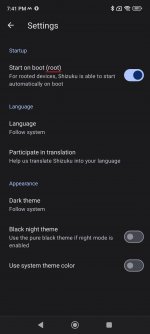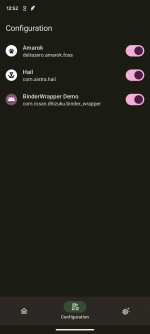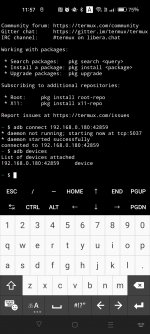FrameXX
Well-known member
Have you ever heard of app called Shizuku?
In simple terms and as far as I understand it is aimed to provide privilegied access and permission to apps like MacroDroid or similiar and remove the need of manual ADB hacking for every app. There are more andvantages of using Shizuku. More can be read here:
On Android 11 onwards you no longer need computer to start ADB/debugging. You can start it directly from the device. With Shizuku you can start a wireless debugging and only thing you need is Wi-Fi connection. This makes it much more convenient to start Shizuku after every restart and clean app UI and guidiance makes it easy for the user.
MacroDroid could of course firstly use Shizuku to grant itself the permissions it needs, but also could probably use Shizuku running server to access some more Android functions I am unaware of.
Although I doubt you would plan such a implementation in near feature I wanted to make you aware of such an option. I think Shizuku is a nice and functional project (even though not much apps implemented shizuku, but there are some) providing a better user experience when trying to provide privilegied access for user apps.

 github.com
github.com
In simple terms and as far as I understand it is aimed to provide privilegied access and permission to apps like MacroDroid or similiar and remove the need of manual ADB hacking for every app. There are more andvantages of using Shizuku. More can be read here:
On Android 11 onwards you no longer need computer to start ADB/debugging. You can start it directly from the device. With Shizuku you can start a wireless debugging and only thing you need is Wi-Fi connection. This makes it much more convenient to start Shizuku after every restart and clean app UI and guidiance makes it easy for the user.
MacroDroid could of course firstly use Shizuku to grant itself the permissions it needs, but also could probably use Shizuku running server to access some more Android functions I am unaware of.
Although I doubt you would plan such a implementation in near feature I wanted to make you aware of such an option. I think Shizuku is a nice and functional project (even though not much apps implemented shizuku, but there are some) providing a better user experience when trying to provide privilegied access for user apps.
Shizuku/README.md at master · RikkaApps/Shizuku
Using system APIs directly with adb/root privileges from normal apps through a Java process started with app_process. - RikkaApps/Shizuku
Last edited:


